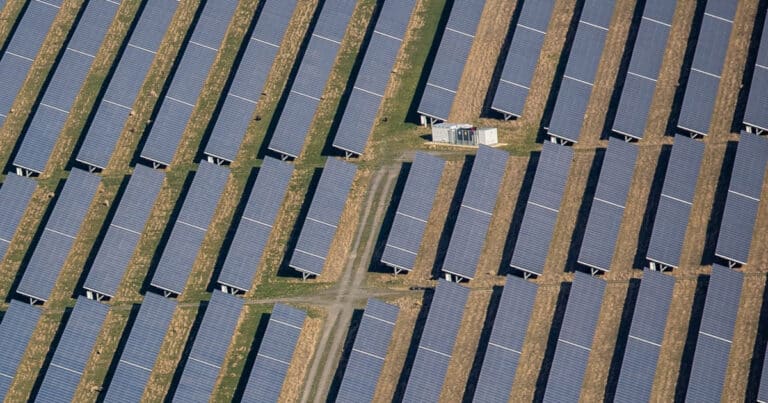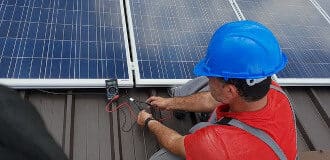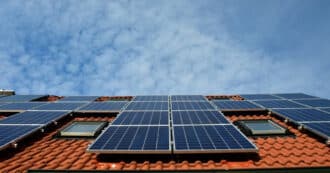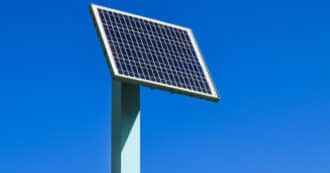By Harry Cooper – Ever since the industrial revolution the world has relied on fossil fuels for its energy. While this drove development and economic growth, scientists have found the burning of fossil fuels to be detrimental to the environment and the human race.
Fossil fuels release greenhouse gases such as carbon when burned, causing climate change on a global scale. While this has threatened the Earth with extreme changes in temperature and weather, fortunately there are many alternatives to fossil fuels that can provide energy, just as efficiently, if not more efficiently than burning fossil fuels.
One such form of renewable energy is solar power. Solar power relies on solar panels to capture the light and heat energy that comes from the sun as it hits the Earth.
Many people have started installing solar panels on their individual homes and businesses. This has helped lower personal energy costs and decrease personal carbon footprints, helping switch the world to renewable energy.
While individually solar powered buildings are helpful for the fight against climate change, there are other ways to implement solar energy on a larger scale. This can be done by creating massive photovoltaic power stations, or solar farms.
These larger scale farms entail utilizing entire plots of land for fields of solar panels collecting solar energy. By using these large scale solar operations, we can fight climate change not by relying on individuals to install solar panels, but by addressing the societal reliance of fossil fuels, by converting a large portion of our total energy usage to green energy.
Why Solar Energy Is So Important
Renewable resources are resources that renew themselves over time and will hypothetically never run out. However solar energy is a specific type of renewable energy called a perpetual resource.
Being a perpetual resource means that not only will the resource renew over time, but using it will not deplete the resource at all in the first place. These kinds of resources include wind energy, hydroelectricity, geothermal energy, tidal energy, and of course, solar energy.
Solar energy is one of the most abundant resources on Earth. It is estimated that the amount of sunlight that hits the surface of the Earth in an hour and a half would be enough to fulfil humanity’s energy needs for an entire year.
This shows just how viable solar power generation is. Utilizing the green energy from the sun could help to solve the world’s energy crisis in a sustainable and environmentally friendly way, by relying on an energy source that will never run out.
How Solar Farms Work
Solar panels are made of of smaller units called photovoltaic cells. These cells work by harnessing solar radiation and converting it into usable electricity.
The photovoltaic cells are made up of three layers. The top layer is made of phosphorus mixed with silicon, the middle layer pure silicon, and the bottom layer boron mixed with silicon.
These materials mixed together create an electric field. When photons from sunlight hit this field it knocks electrons lose. These lose electrons then travel to a layer of metal around the photovoltaic cells and become electricity which then travels through an electricity grid to be stored in a battery, and eventually through power lines to be used in homes and businesses.
Types of Solar Farm
Once the electricity from the solar farm has been stored, there are two different ways this energy can be distributed to the people and buildings that need it. These two types of solar farm are called a utility scale solar farm and a community scale solar farm.
On a community scale solar farm customers tend to have more participation in the operations. A community solar farm involves customers jointly owning or subscribing to solar projects. When customers do this, they receive credit on their utility bills based on how much energy their share of the solar project produces.
A utility scale solar farm works a little differently than a community based one. Instead of having customers being directly or indirectly involved in the solar farm operation, a utility scale solar farm is either run by electric utilities, or run by private companies that sell their solar energy to utilities.
Pros and Cons of Solar Farming
Thanks to the emerging solar industry, solar installations are becoming more and more common in the US and the world. But what are the specific benefits and drawbacks of using solar energy?
Pros of Solar Power
Clean, Safe, Modern Technology
Solar panels and solar farms are on the cutting edge of modern technology. Their design makes them cleaner and all around more efficient.
Unlike fossil fuels, solar energy is an almost completely carbon neutral source of energy. This is because producing solar power emits no carbon or greenhouse gases whatsoever, making it an incredibly viable replacement of fossil fuels to help combat climate change.
A solar farm also has an edge over other types of power plants because it requires so little maintenance. Most solar farms require one time installations with very little upkeep over the years. This is because solar panels require no extra resources while in operation and have no moving parts. This makes them very resistant to degrading over time. Many solar panels can last a couple of decades without any kind of repairs, usually around 25 years.
This lack of external inputs and moving parts also makes a solar farm a lot simpler in its operation. Without having the massive moving parts and a workforce constantly tending to the machinery, dangerous workplace accidents are much less likely to happen on a solar farm than they would be in more conventional power plants. By creating a safer way to harness power, a solar farm also doesn’t need to worry about as many work place regulations and red tape. Along with this, the lack of complex machinery means a solar farm makes very little noise, making for more peaceful environments.
Along with solar technology being cleaner and safer, it is also a very new technology, meaning that it still has a lot of room to become more efficient, as scientists continue researching the potentials of solar technology. By looking at past trends in solar technological development, we can expect to see solar farms becoming even more efficient at producing energy than they already are.
Cheap Energy Creates a Healthy Economy
The technology behind solar energy is cleaner and safer. Along with this, implementing solar farms can also have numerous benefits for the economy.
For starters, installing solar farms requires one investment in its initial installation, followed by long term returns. This is because solar farms require little maintenance, meaning that there is rarely a need to pay to repair or replace parts on a solar farm. It is estimated that most solar farms pay for themselves after about eight years and after this they continue to generate profit for the rest of their approximately 25 year lifetime. This makes solar farms an incredibly cost efficient form of energy production.
Solar farms can also contribute to local economies by creating jobs. While solar farms require little maintenance over their lifetime, they require a lot of initial work to get them up and running. This can provide a lot of jobs to local communities around solar farms. Thus solar farms can contribute to local economies by providing cheap energy and creating a lot of job opportunities.

Cons of Solar Power
Solar Needs Space
While there are many advantages to installing a solar farm, there are also a few cons, such as the amount of space it takes to build a solar farm. Usually a solar farm requires at least a couple of acres in order to operate properly which results in solar farms usually having to be installed in rural areas.
Once installed, the land used by solar farms can’t really be used for anything else. And because solar farms are often installed in rural areas, it can detract from land that would be used for agriculture by local farmers.
Solar farms can also be harmful to local ecosystems. Because they take up so much space, solar farms can encroach on local wildlife habitats. This can force many animals out of their homes and destroy nearby ecosystems.
Solar is Unreliable
It should come as no surprise that solar energy is incredibly reliant on the sun. When the sun doesn’t shine because of overcast weather solar panels can’t produce as much electricity. Solar panels also fall short in producing energy during the winter time because of the shorter days.
Because solar energy production is so dependent on weather, it can make it very hard to predict just how profitable a solar farm will be each year. This inconsistency can also be a problem because many homes and businesses rely on energy, and not being able to count on consistent energy can be a nuisance.
Solar Farms and Religion
The Interfaith Center for Sustainable Development (ICSD) is building “large-scale solar fields on Anglican church lands in Mozambique” as part of the Faith Inspired Renewable Energy Project in Africa, in partnership with organizations like Gigawatt Global Coöperatief U.A., Green Anglicans–Anglican Church of Southern African Environmental Network, Shine Campaign and PaRD (The International Partnership on Religion and Sustainable Development).
As Pope Francis wrote in Laudato Si: On Care for Our Common Home: “Taking advantage of abundant solar energy will require the establishment of mechanisms and subsidies which allow developing countries access to technology transfer, technical assistance and financial resources.” ICSD is working hard to make Pope Francis’ dream of utilizing our planet’s “abundant solar energy” come true.
* Featured image source







